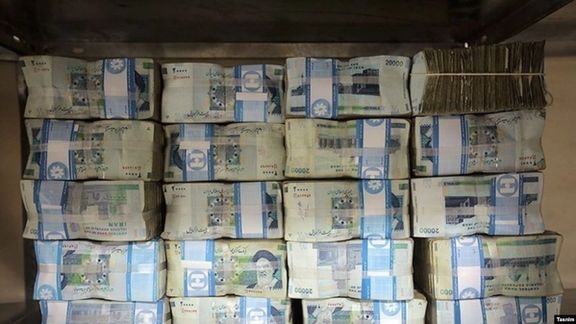Iranian Year Comes To An End With 40-Percent Inflation

Iran’s annual inflation rate topped 40 percent in the past 12 months, the highest since 1996 when it reached 50 percent, according to Iran Statistical Center.

Iran’s annual inflation rate topped 40 percent in the past 12 months, the highest since 1996 when it reached 50 percent, according to Iran Statistical Center.
The figures show food prices rising much faster than the general inflation rate, reaching 51.5 percent from March 21, 2021, to March 20, 2022 – the period covering the Iranian calendar year 1400 which ended on Sunday.
In recent months, official reports were saying that food prices were rising by more than 60 percent, but Statistical Center, a government entity put the final annual report just above 50 percent. Government officials had also warned that poverty was rising and many middle-class families’ purchasing power dropped to the “poverty line.”
Labor unions have insisted that a family of 3.3 persons needs a monthly income of around $450 to afford basic necessities and avoid being categorized as ‘poor’, but average salaries for wage earners were between $100-150 throughout the year. Recently, government and labor representatives agreed to raise the minimum salary that most workers receive, to a little over $200 a month, which is still well below the $450 cited as the minimum need of a small family.
Private sector businessmen, however, have warned that the nearly 45-percent rise in the minimum wage will simply make inflation worse in the absence of strong economic growth.
The Iranian Labour News Agency ILNA published an interview with a member of Iran’s Chamber of Commerce, Khosrow Forughan on Tuesday, who said the inflation rate is bound to continue or get worse. The government has eliminated subsidies for food and animal feed and has raised natural gas prices for some customers, he said. He also cited a large government budget deficit as more reason for inflation to remain high.
The average economic growth rate in the past decade has been zero, affected by international and United States sanctions. But growth has been weak throughout the 43-year history of the Islamic Republic averaging about 2.5 percent, while developing countries need much higher growth to expand their economies. Still, what was achieved was mainly due to crude oil exports.
Consecutive governments have resorted to printing money to deal with sanctions and slow growth, expanding liquidity by eightfold since 2013. This is the immediate cause of high inflation.
Gholam-Hassan Netaj, a banking expert told Alef news website on Wednesday that existing high liquidity is beyond the tolerance level of the economy, leading to inflation, and creating a vicious circle of printing more money. Banks are unable to collect loans from commercial customers and they turn to the Central Bank of Iran (CBI) to borrow more money. The government also forces banks, mostly owned by state entities, to provide financing to quasi-state inefficient companies, forcing CBI to print money.
Netaj also underlined that a policy of forcing banks to provide loans for increasing industrial production will backfire because it would add to liquidity. Iran’s Supreme Leader Ali Khamenei has been urging banks to target their loans to encourage production. Netaj said that as long as the country faces high liquidity, targeted loans will not be effective.
Although Iran’s parliament is politically aligned with the presidential administration of Ebrahim Raisi, it has strongly signaled its unhappiness with several ministers. Lawmakers who were elected two years ago in a low-turnout election have to face constituents and have no answers for high inflation.
A senior member of parliament, Hossein-Ali Haji-Daligani was quoted by Etemad Online website on Wednesday as saying, “When people meet us and ask why the price of rice has doubled, we have no answers.”